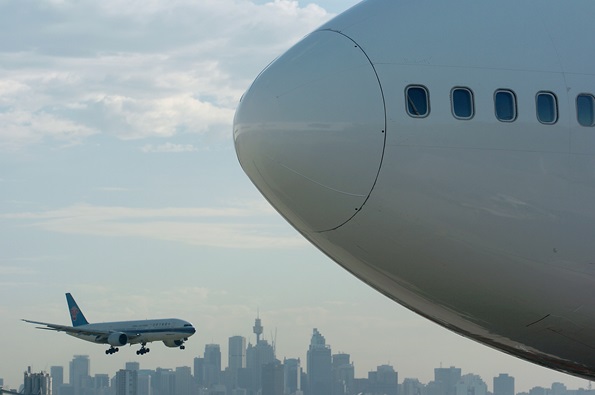International airlines operating to Australia have warned against taxing passengers to fund a second Sydney Airport as they outlined what needs to be done to make the increasingly controversial project commercially viable.
The Board of Airlines Representatives of Australia, representing 32 carriers, warned that the commercial success of the new airport depends on the efficiency of “critical aviation infrastructure’’ including the efficient design of approach flight paths and a need for 24/7 operations.
Both of those issues are politically sensitive and have already generated significant controversy among residents in areas surrounding the airport site in Western Sydney. Despite a lack of details and the fact there is no decision yet on who will build the facility, there have already been calls for constraints on the airport’s operations that will make it less attractive to airlines.
The Australian government has yet to hand over a proposed development plan to Sydney Airport, which has first right of refusal on the project under the agreement that saw the existing airport privatised. If it pushes ahead, analysts expect Sydney Airport of contribute about $1 billion, leaving up to $4 billion to be funded by the government or through debt.
BARA believes there is sufficient demand in Western Sydney to warrant air transport services but argues the airport will be successful only if the operator adopts key infrastructure initiatives designed to maximise airline operating efficiencies, minimise costs and provide superior passenger and freight services. This includes providing operational excellence in areas such as on time performance, baggage and freight management as well as the overall passenger experience.
It also requires a competitive and reliable supply of jet fuel that provides open access to global suppliers to gain lower prices as well as “efficient and predictable safe aircraft operations” that reduce flight times, lower fuel burn and increase airline performance.
Tied in with this is “best practice” aircraft noise mitigation which balances aircraft operations and community expectations in allowing international airlines to make the most of available market opportunities.
BARA executive director Barry Abrams said the group's report indentified the critical role a commercially focused airport operator would play and the need for accountability to extend "well beyond asset management to active engangement with all participants at the airport.''
Mr Abrams said the airport offered a unique greenfield opportunity to improve aircraft efficiency through the use of new air navigation technologies.
“The development of Western Sydney Airport (WSA) also offers an opportunity to review the airspace design for all flight paths along the east coast of Australia in supporting an efficient aviation industry,’’ he said. “BARA supports 24-hours a day, seven days a week operations at WSA, offering international airlines wider and more flexible market opportunities. The International Civil Aviation Organization’s (ICAO) ‘balanced approach’ to aircraft noise mitigation should be applied at WSA and Australian airports more generally.’
The BARA report throws its weight behind Closed Standard Terminal Arrival Routes (STARs), a fixed route that aircraft follow to land at an airport, combined with strategic and tactical sequencing as the best way of providing traffic management for the airport.
It says this approach — also used at Melbourne, Brisbane and Perth airports — allows flight management systems to minimise fuel burn and provide predictability to flight crews in approaching and landing safely at an airport.
On noise mitigation, the group says ICAO’s “balanced approach’’ looks at issues such as reducing noise at the source, restrictions on aircraft and operational procedures, such as precision approaches, that cut noise.
“International airlines are increasing the number of quieter, ‘new generation’ aircraft they operate into Australia, contributing to better outcomes for communities,’’ the report says. “ICAO’s latest ‘Chapter 14’ aircraft engine noise standard provides for further reductions in aircraft engine noise and will apply to newly designed high-weight aircraft entering service from 2017.
“BARA expects these quieter aircraft will form a significant proportion of the aircraft operating international air services to and from WSA.''
Taking a strong line against taxing passenegers to fund the project, BARA argues any cost shortfall should be funded from the Australian government’s consolidated revenue and warns against imposing a levy on airfares for either the airport’s construction or its ongoing operations. It also does not support cross-subsiding the costs of new airportthough additional charges at Sydney’s Kingsford Smith Airport.
“International airlines have underpinned the growth of passenger services into Australia through real airfare reductions of some 30 per cent over the last decade,’’ it says. "Placing an extra levy on otherwise commercially viable air routes, now or in the future, will only serve to reduce airfare affordability, which would damage inbound tourism and decrease the opportunities for Australians to holiday and visit family and friends overseas.''
























